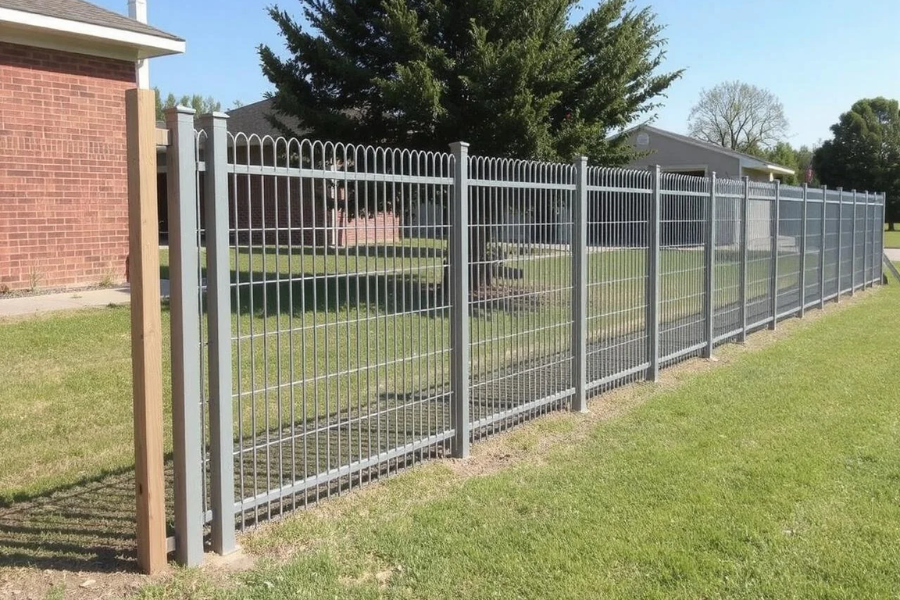A Step-by-Step Guide to Installing Delta V-Tech Fencing: Secure and Stylish Boundaries for Your Property in 2024
Why Choose Delta V-Tech Fencing?
Delta V-Tech fences are known for their cutting-edge design and superior durability, making them a top choice for homeowners looking to enhance both the security and aesthetic appeal of their outdoor spaces. Constructed from advanced materials, these fences are built to withstand severe weather, resist rot, and maintain their appearance with minimal upkeep. Available in a wide range of styles and colors, Delta V-Tech fences complement various architectural designs, while their solid construction provides reliable protection against intruders and animals.
Advantages of Delta V-Tech Fencing
- Durable Materials: Built to last, these fences resist decay, damage from pests, and wear and tear from the elements.
- Low Maintenance: Unlike traditional wood fences, they require minimal upkeep, saving you time and effort.
- Design Flexibility: With numerous styles and colors available, Delta V-Tech fences can suit any landscape or personal taste.
- Eco-Friendly: Many products are made from recycled materials, making them a sustainable choice.
- Cost-Effective: Though the initial cost might be higher, the long-term savings on maintenance and repairs make them a smart investment.
Tools and Materials Checklist
Before you start, gather the necessary tools and materials to ensure a smooth installation process:
Tools:
- Measuring tape
- Post hole digger
- Level
- Hammer and screwdriver
- Power drill
- Safety gear (gloves, safety glasses)
- String line and chalk line
Materials:
- Delta V-Tech fence panels
- Fence posts
- Concrete mix
- Nails or screws
- Gravel (optional for drainage)
- Post caps (optional for enhanced appearance)
Step-by-Step Installation Process
Step 1: Plan Your Fence Layout
Before beginning any installation, it’s crucial to map out your fence layout. First, confirm your property lines to avoid disputes with neighbors, and familiarize yourself with local regulations regarding fence height and design. Use stakes and string to visualize the fence’s perimeter and determine where you will place the posts.
Step 2: Measure and Mark Post Locations
With your layout established, measure and mark where your fence posts will go. Posts should be spaced about 6 to 8 feet apart for optimal stability. Mark the locations for corner and end posts first, as these will serve as the foundation for the rest of your fence.
Step 3: Dig Post Holes
Using a post hole digger, create holes at least 2 feet deep, or one-third the height of the fence, for stability. Ensure the hole is wide enough (about three times the width of the post) to allow for secure placement with concrete. In areas with heavy winds or erosion, you may need to dig deeper for added security.
Step 4: Set the Fence Posts
Position the posts in the holes, making sure they are vertically aligned. Use a level to ensure each post is straight, then fill the holes with concrete. Follow the manufacturer’s instructions for mixing the concrete, and allow it to set for at least 24 hours before proceeding with the installation of the fence panels.
Step 5: Attach the Fence Panels
Once the posts are securely in place, begin attaching the Delta V-Tech panels. Start at one end of the fence and position each panel between two posts. Secure them using exterior-grade screws or nails, ensuring that the panels are level. Leave a small gap (about half an inch) between the panels and the ground to allow for proper drainage.
Step 6: Install Post Caps
For a polished finish, consider adding post caps to the tops of your fence posts. Not only do they enhance the look of your fence, but they also protect the posts from moisture, preventing rot over time.
Step 7: Final Inspection and Cleanup
After the installation is complete, inspect the entire fence to ensure everything is level and securely fastened. Remove any leftover materials or debris to leave your yard neat and tidy. Regular maintenance, such as occasional cleaning and inspections, will help extend the life of your fence.
Maintenance Tips
To keep your Delta V-Tech fence looking its best, perform regular inspections for damage, clean it with mild soap and water, and refresh paint or stain as needed. Regularly check post caps and replace them if necessary to prevent moisture damage.
FAQs
1. How long does it take to install a Delta V-Tech fence?
Installation time varies depending on the size of the project and whether you’re working solo or with a team. A small fence can be installed in a day, while larger projects may take a couple of days.
2. Is a permit required to install a fence?
Check with your local authorities to determine if a permit is required before installation. Regulations may vary based on your location and the type of fence you’re installing.
3. Can I install the fence myself?
Yes, installing a Delta V-Tech fence can be a DIY project if you have the necessary tools and skills. However, for large or complex projects, hiring a professional installer may save time and ensure the job is done correctly.
4. What styles of Delta V-Tech fences are available?
Delta V-Tech offers various fencing styles, including privacy, decorative, and security fences, with a range of heights and colors to choose from.
5. Are Delta V-Tech fences environmentally friendly?
Yes, many Delta V-Tech products are made from recycled materials, offering an eco-friendly fencing option with a long lifespan that reduces the need for replacements.
Conclusion
Installing a Delta V-Tech fence is a rewarding project that enhances both the security and beauty of your outdoor space. By following the steps outlined in this guide, you can create a fence that not only stands the test of time but also adds value to your home. Whether you choose to install it yourself or hire professionals, your new fence will offer a stylish and functional addition to your property for years to come.
